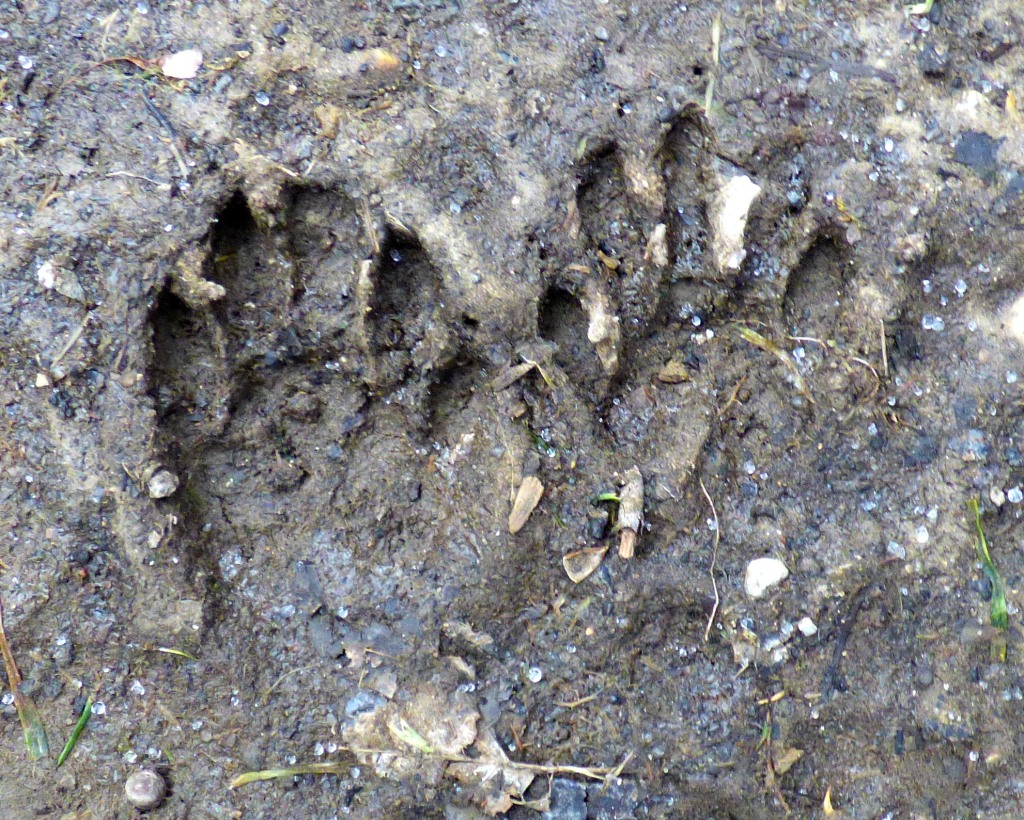 While hiking through the woods with Mr. Cooper the other day, the children came across some unknown tracks in the mud. With Mr. Cooper’s help, they deduced that they must have been made by wild turkeys. Returning to the classroom, we made a list of other kinds of tracks we might be able to find on our campus. These discussions prompted at least a week’s worth of group and individual activities.
While hiking through the woods with Mr. Cooper the other day, the children came across some unknown tracks in the mud. With Mr. Cooper’s help, they deduced that they must have been made by wild turkeys. Returning to the classroom, we made a list of other kinds of tracks we might be able to find on our campus. These discussions prompted at least a week’s worth of group and individual activities.
Using play dough and our collection of animal models, the children explored the variety of tracks that animals can make. Of course, once we started making animal tracks, cars, trucks, blocks, and cooking tools made tracks as well. We also discussed the idea that our plastic models may or may not be entirely accurate when making tracks.
Over in the math area, we examined scale copies of wild animal prints. The children used Unifix cubes to measure six different tracks. They used one-to-one correspondence when counting, non-standard units of measure when finding the length, and numeral recognition as they wrote the length found.

Once they completed the measuring portion of the project, the children practiced motor planning and understanding spacial relationships as they decided how to arrange their footprints so that all of them fit on their display.

Our final project invited the class to practice their skills as an illustrator. We created a book called, “Who was here?”. Each page had a different foot print and text matching the animal track (“A cat was here.”) with lots of white space for their animal portrait. While reading, we practiced using our “reading finger” to point at each word as we read and scanning from the left to the right. We also used the track images and beginning letter sounds to identify unknown words.



 Questions certainly arose when these small, round marks were found in the snow. Many had the idea that they must be tiny footprints made the night before. A host of animals were put forth as the culprits. We’ll have to keep an eye on the phenomenon and see if we can gain more clues.
Questions certainly arose when these small, round marks were found in the snow. Many had the idea that they must be tiny footprints made the night before. A host of animals were put forth as the culprits. We’ll have to keep an eye on the phenomenon and see if we can gain more clues. While hiking through the woods with Mr. Cooper the other day, the children came across some unknown tracks in the mud. With Mr. Cooper’s help, they deduced that they must have been made by wild turkeys. Returning to the classroom, we made a list of other kinds of tracks we might be able to find on our campus. These discussions prompted at least a week’s worth of group and individual activities.
While hiking through the woods with Mr. Cooper the other day, the children came across some unknown tracks in the mud. With Mr. Cooper’s help, they deduced that they must have been made by wild turkeys. Returning to the classroom, we made a list of other kinds of tracks we might be able to find on our campus. These discussions prompted at least a week’s worth of group and individual activities.
